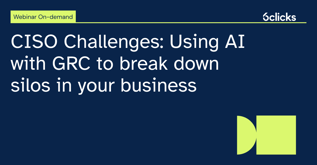What is cybersecurity risk management?
Cybersecurity risk management is a crucial procedure that revolves around recognizing, evaluating, and addressing potential risks to an organization's information and technology systems. Its primary goal is to safeguard against cyber threats, vulnerabilities, and unauthorized access to sensitive data.
By implementing appropriate measures, cybersecurity risk management becomes an integral component of an organization's comprehensive security strategy. It ensures the protection of vital information and systems, shielding them from potential threats and vulnerabilities that could otherwise pose significant harm.
What are the major cybersecurity threats?
The most common cybersecurity threats are:
- Malware: Malware is software that is designed to damage or disrupt computer systems. It can take many forms, including viruses, worms, ransomware, and spyware. Malware is often delivered through email attachments, malicious websites, or infected software downloads.
- Phishing: Phishing is a type of cyber attack in which attackers use fake emails or websites to trick victims into revealing sensitive information, such as login credentials or financial data. Phishing attacks often use social engineering techniques to lure victims into clicking on malicious links or downloading malicious attachments.
- Ransomware: Ransomware is a type of malware that encrypts an organization's data and demands a ransom payment in exchange for the decryption key. Ransomware attacks can be devastating, as they can prevent organizations from accessing their own data until the ransom is paid.
- Social engineering: Social engineering is a type of cyber attack that relies on human interaction to trick victims into revealing sensitive information or giving attackers access to their systems. Social engineering attacks often use psychological manipulation to exploit victims' trust and curiosity.
- Distributed denial of service (DDoS): A distributed denial of service (DDoS) attack is a type of cyber attack that overloads a website or network with traffic, making it unavailable to users. DDoS attacks are often carried out by networks of compromised devices, known as botnets.
- Password cracking: Password cracking is the process of using specialized software to guess or uncover a password. Attackers can use password cracking techniques to gain access to accounts and steal sensitive information.
- Network vulnerabilities: Network vulnerabilities are weaknesses in an organization's network infrastructure that can be exploited by attackers to gain access to sensitive data or disrupt services. These vulnerabilities can arise from a variety of sources, including outdated software, misconfigured network devices, and unsecured network protocols.
How can organisations perform cybersecurity risk management?
There are several steps that organizations can take to perform cybersecurity risk management:
- Identify the risks: This involves identifying the potential threats and vulnerabilities that could affect an organization's information and systems. This can be done through a thorough analysis of the organization's technology infrastructure and processes, as well as by regularly monitoring the threat landscape for new or emerging threats.
- Assess the risks: Once the risks have been identified, they need to be assessed in order to determine their potential impact and likelihood. This will help the organization prioritize which risks to address first and allocate resources accordingly.
- Mitigate the risks: Once the risks have been assessed, the organization can implement measures to mitigate them. This may involve implementing technical controls, such as firewalls and intrusion detection systems, as well as non-technical measures, such as employee training and incident response plans.
- Monitor and review: Cybersecurity risk management is an ongoing process, and organizations should regularly monitor their systems and processes for signs of potential threats or vulnerabilities. This can help to identify any new risks that have emerged and to ensure that the organization's risk management measures remain effective.
What is a Cybersecurity Risk Assessment?
A cybersecurity risk assessment is a systematic procedure undertaken by organizations to evaluate their critical business objectives and identify the IT assets necessary to achieve them.
During this assessment, potential cyber attacks that could pose a threat to these IT assets are identified. The organization analyzes the likelihood of these attacks occurring and assesses the potential impact they may have.
A comprehensive cybersecurity risk assessment maps out the entire threat landscape, highlighting how each threat can affect the organization's business objectives.
The ultimate outcome of this assessment is to empower security teams and other stakeholders to make well-informed decisions regarding the implementation of security measures that effectively mitigate these identified risks.
What Are Cyber Threats?
The term "cyber threat" encompasses various methods that can be exploited to breach security, cause harm to an organization, or steal sensitive data.
Modern organizations face several common threat categories:
-
Adversarial Threats: These include threats from third-party vendors, insider threats, hacker collectives, privileged insiders, ad hoc groups, suppliers, corporate espionage, and even nation-states. Malicious software (malware) created by any of these entities is also a part of this category. To combat these threats, large organizations establish a Security Operations Center (SOC) with trained staff and specialized tools.
-
Natural Disasters: Events like hurricanes, floods, earthquakes, fire, and lightning can cause significant damage to an organization, similar to a cyber attack. Such disasters can lead to data loss, service disruptions, and destruction of physical or digital resources. Minimizing this threat involves distributing operations across multiple sites or using distributed cloud resources.
-
System Failure: When a critical system fails, it can result in data loss and disrupt business continuity. To mitigate this threat, organizations should ensure high-quality equipment for critical systems, have redundancy for high availability, regular backups, and timely support from providers.
-
Human Error: Accidental actions by users can lead to downloading malware or falling victim to social engineering schemes like phishing campaigns. Storage misconfigurations may expose sensitive data. Preventing and mitigating these threats requires employee training programs and enforcing strong security controls, such as password managers and monitoring critical systems for misconfigurations.
Key threat vectors affecting most organizations include:
-
Unauthorized Access: This can be caused by malicious attackers, malware, or employee errors.
-
Misuse of Information by Authorized Users: Insider threats may misuse information by unauthorized alteration, deletion, or use of data.
-
Data Leaks: Threat actors or cloud misconfigurations may lead to leaks of personally identifiable information (PII) and other sensitive data.
-
Loss of Data: Poorly configured replication and backup processes may result in data loss or accidental deletion.
-
Service Disruption: Downtime, whether accidental or due to denial-of-service (DoS) attacks, can cause reputational damage and revenue losses.
Overall, organizations need to adopt comprehensive security measures, implement employee training, and invest in robust infrastructure to effectively counter these cyber threats.
What are the important considerations for cybersecurity risk management?
There are several important considerations for cybersecurity risk management:
- Business impact: Organizations should consider the potential impact that a cybersecurity breach could have on their business. This includes the financial cost, reputational damage, and potential loss of customer trust. By understanding the potential impact of a breach, organizations can prioritize their risk management efforts and allocate resources accordingly.
- Legal and regulatory compliance: Organizations should ensure that their cybersecurity practices align with relevant laws and regulations. This may include industry-specific regulations, as well as broader laws governing data protection and privacy. Failure to comply with these laws and regulations can result in significant fines and other penalties.
- Threat landscape: Organizations should regularly monitor the threat landscape for new or emerging threats, and adjust their risk management measures accordingly. This may involve implementing new technical controls, updating employee training programs, or revising incident response plans.
- Organizational culture: An organization's culture plays a key role in its overall cybersecurity posture. By fostering a culture of security and awareness, organizations can ensure that all employees understand the importance of protecting sensitive data and are vigilant in identifying and reporting potential threats.
- Budget and resources: Cybersecurity risk management requires a significant investment of time, resources, and budget. Organizations should carefully consider the costs and benefits of their risk management measures, and allocate resources in a way that maximizes their return on investment.
Cyber Risk Management Frameworks
Organizations have several cyber risk management frameworks at their disposal to identify and mitigate risks effectively. These frameworks, utilized by senior management and security leaders, help assess and enhance the organization's security posture.
A cyber risk management framework serves as a valuable tool for organizations, allowing them to assess, mitigate, and monitor risks while defining security processes and procedures to address potential threats. Below are some commonly used cyber risk management frameworks:
-
NIST CSF: The National Institute of Standards and Technology Cybersecurity Framework (NIST CSF) is a widely adopted framework. It provides a comprehensive set of best practices that standardize risk management. The NIST CSF defines core functions for cybersecurity risk management, such as protect, detect, identify, respond, and recover.
-
ISO 27001: Created in partnership with the International Electrotechnical Commission (IEC), ISO/IEC 27001 is an essential cybersecurity framework offered by the International Organization for Standardization (ISO). It offers a certifiable set of standards designed to systematically manage risks posed by information systems. Additionally, organizations can leverage ISO 31000 for guidelines on enterprise risk management.
-
DoD RMF: The Department of Defense (DoD) Risk Management Framework (RMF) is a set of guidelines utilized by DoD agencies for assessing and managing cybersecurity risks. RMF divides the cyber risk management strategy into six key steps—categorize, select, implement, assess, authorize, and monitor.
-
FAIR Framework: The Factor Analysis of Information Risk (FAIR) framework aids enterprises in measuring, analyzing, and understanding information risks. This framework empowers organizations to make well-informed decisions while establishing cybersecurity best practices.
These cyber risk management frameworks provide a structured approach to manage and tackle security risks effectively. By leveraging these frameworks, organizations can bolster their security measures and ensure a resilient cybersecurity posture. Continual monitoring and adaptation to emerging threats are vital aspects of maintaining a robust cybersecurity strategy.
Final thoughts
Cybersecurity is an integral part of an organization's risk management. However, with the security landscape changing fast and frequently, risk management is more complex than ever. Evolving cyber threats, increasing threat surface due to technological advancements, exposure to third-party entities, and the barrage of regulatory changes all make it harder for organizations to manage risk.
Modern problems need modern solutions and that's where 6clicks comes with a cybersecurity risk management platform powered by AI and automation. It unifies and automates the processes for effective risk management and provides all resources from content to analytics making risk management streamlined and simplified. For more information, check out our solution - Risk Management. Managing cybersecurity risk and achieving regulatory compliance was never this easy.
Written by Dr. Heather Buker
Heather has been a technical SME in the cybersecurity field her entire career from developing cybersecurity software to consulting, service delivery, architecting, and product management across most industry verticals. An engineer by trade, Heather specializes in translating business needs and facilitating solutions to complex cyber and GRC use cases with technology. Heather has a Bachelors in Computer Engineering, Masters in Engineering Management, and a Doctorate in Information Technology with a specialization in information assurance and cybersecurity.









